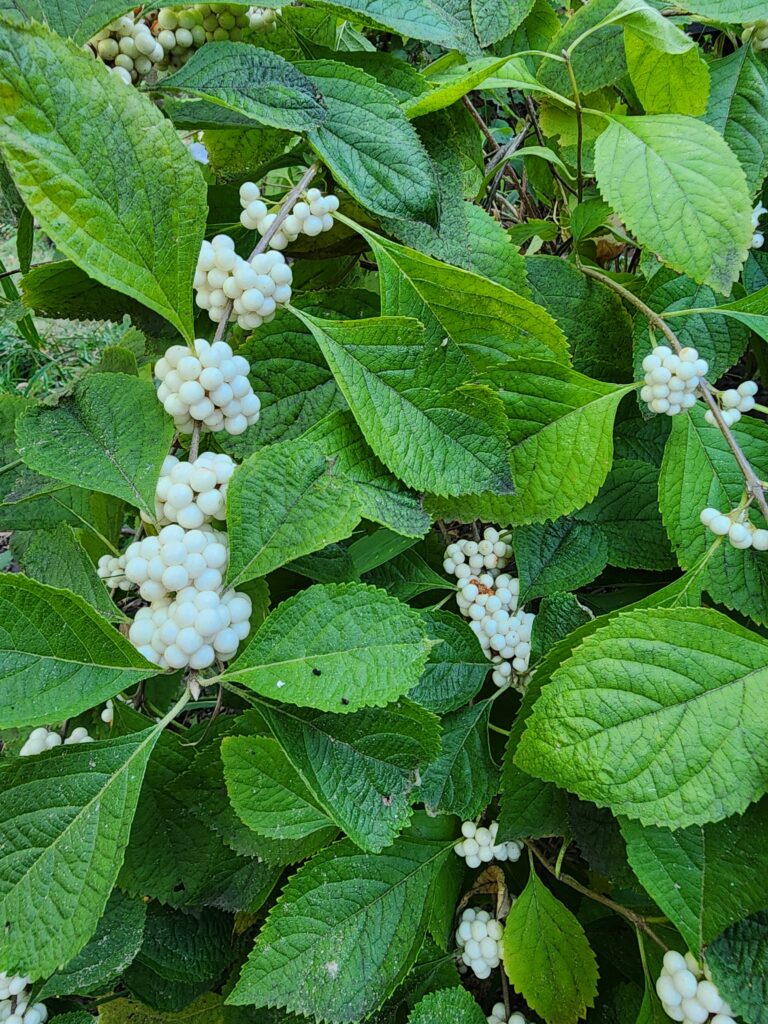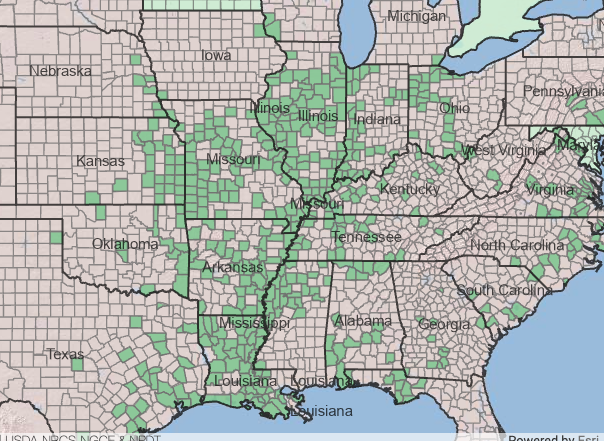I recently spoke at the Oklahoma Native Plant Network fall festival in Oklahoma City. They had a day full of speakers, including representatives from Tulsa Botanic Garden, the Xerces Society and Bat Conservation International. But the real treat of course was the plant market outside the presentation hall. So many great native treasures were available from local vendors, I couldn’t resist buying a few new plants. I was able to get a few hard-to-find species for installation on the Arboretum grounds. Keep an eye out for these beauties on your next visit.
Callicarpa americana var. lactea – White American Beautyberry

I didn’t even realize a naturally occurring white variety of beautyberry existed until I saw it being sold by Wild Things Nursery at the ONPN event. All the same lovely characteristics as its purple cousin – shade tolerant, pollinator friendly, bird attracting – but with striking white berries on arching stems. Marilyn, the owner of Wild Things Nursery said she collected the seed over twenty years ago down a shady dirt road in north western Arkansas. According to her they come true from seed reliably. Beautyberry are marginally edible, though not very tasty. Find these new additions in the back of the Compassionate Friends Garden near the hedgerow at the arboretum.
Hibiscus laevis – Halberd-leaf Rosemallow
Our pond has several lovely Hibiscus moscheutos thriving along its edge, and I am excited to add H. laevis to the mallow collection. This is a slightly taller species with narrow leaves, as the name implies, in the shape of a medieval sword. Native throughout the eastern half of the US, though much of its wetland habitat in the mid-Atlantic has been disturbed. Sadly, it is not as commonly found as it once was. I’ll be planting this on tip of the island, where there is some space on the banks thanks to our latest renovation. I found this at a great plant at a vendor called Duck Creek Farms from Mounds, Oklahoma.

Wisteria frutescens – American Wisteria
Anyone who has seen the opening scenes of Bridgerton house on Netflix’s hit show will recognize the pendulous purple blooms of Wiseria vine. But most of the Wisteria you see in media and in formal landscapes is the asian variety. Beautiful, but at a price: invasive in certain parts of the country and downright pushy in the garden, it needs diligent trimming to keep growth in check. But native W. frutescens is a great alternative to its exotic cousins, and with plenty of color to spare. I’ll plant this next spring near a leg of our new octagonal gazebo soon to be erected in the Birdwatch Garden.

Shop Til You Drop

In between shopping for the Arboretum, giving the keynote presentation of the festival, and networking with all the like-minded conservationists and plant peddlers, of course I also snagged a few things for my own landscape! I found blackfoot daisy (Melampodium leucanthum) for a hot, dry spot near my front sidewalk. I also found an adorable spineless cactus (possibly Optunia ellisiana?) to plant nearby. Here’s hoping these cuties fill in the rather inhospitable space between my purple prairie clover and creeping sedum.
If you are in the area, put ONPN’s fall festival on your radar for next year. It was a great time to learn about native plants and related topics in conservation. And you will never see me turn down an opportunity to buy plants and support small growers!


